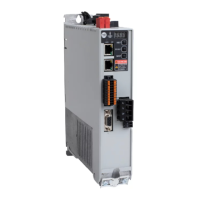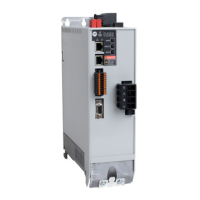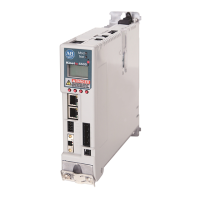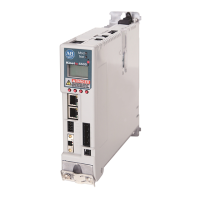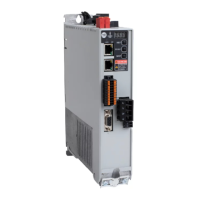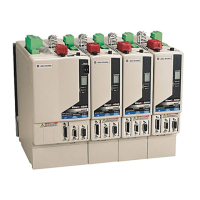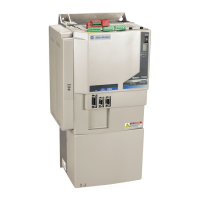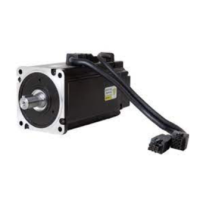518 Rockwell Automation Publication 2198-UM004D-EN-P - December 2022
Appendix C Use Add-On Instructions
The MAG Set_SlaveCounts is sometimes called the Gear Ratio Follower Counts
or numerator (shown as 2 in Figure 268
) because it is used to determine the
internal 'ratio' of the drive (shown as 1677.72 in Figure 268
). For our purposes,
the E-Gear ratio Follower = MAG Set_SlaveCounts = motor feedback resolution
(from the KNX5100C>Function List>Motor Selection>Feedback dialog box).
Figure 269 - Set the Follower Counts
The MAG Set_MasterCounts is sometimes called the Gear ratio Master counts
or denominator (shown as 3 in Figure 268
). Any gearing relationship must
consider the actual motor mechanics, like a gearbox, or actuator pitch, and use
those mechanics to relate back to a motor rotation. Gear Ratio Master counts is
desired counts/motor rotation. Desired counts are not used for positioning;
but defines how many counts your motor moves in one rotation based on the
number of feedback pulses you expect to receive from the source input, which
is used to determine your gearing relationship. So, this Master counts value is
used to define the pulse-pulse relationship.
IMPORTANT The MAG Add-On Instruction can affect your positioning. The issuing
Kinetix 5100 drive (slave) uses the E-Gear ratio to define how it follows
pulses from a source (a master). While the result is that the issuing
Kinetix 5100 drive (slave) follows pulses from another source (master),
the way the function operates can affect positioning of the drive.
Regardless of Operation Mode, the E-Gear ratio is always used to
provide a representation of positioning (units or counts) or to define a
Pulse-Pulse Following relationship (MAG/PT). When the E-Gear ratio is
changed, the positioning of the axis is changed.
EXAMPLE Gearing example:
The master in our system is a 4000 ppr encoder. When the encoder
makes one revolution, we expect the Slave1 drive to see: 4000
pulses.
Our application requirement is that we want to follow this encoder
at a 1:2 relationship. So, when the master encoder moves one
encoder revolution, the motor rotates two times.
The Master PPR is not entered anywhere, but is required that we
know this value. We calculate the MAG Set_MasterCounts value
knowing the Master PPR counts and the relationship we want in the
Slave1 motor.
We set the MAG Set_SlaveCounts = Motor Feedback Resolution =
16,777,216.
We set MAG Set_MasterCounts = 2000, so when the Slave1 drive
sees 2000 master pulses, the Slave1 motor moves one rotation, and
thus, as the Master encoder moves 4000 pulses, Slave1 would have
moved two rotations.
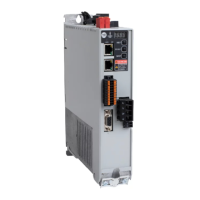
